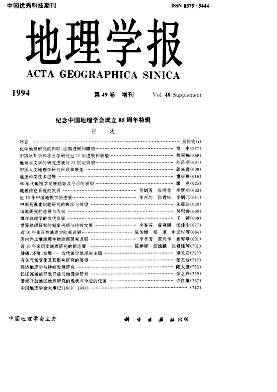Cheng Chuankang
Modern geography mainly researches the chronicle and spatial development order of regional characters and differentiation about “earth’s substance” and “earth’s phenomena” on epigeosphere.Starting with foods and dishes as earth’s substance; while dietary culture as earth’s phenomena,this paper expounds the chronicle and spatial development order of the regional characters and differentiation about Chinese dietary culture after studying the territorial differentiation of dietary culture,formation of cuisine systems (diet set) and comparative researches on Chinese four main diet sets.All of this will promote and guide the dissemination and management for chinese dietary business.Different regional diet customs and cuisine skills, which forms their own corresponding diet set. banquet style and mass collation, together with the local habits to various tastes, contribute the culture of chinese diet.Diet set refers to those local diet in restaurants (even for banquet), selected from rural diet and common daily diet with local unusual tastes, Local diet, while it is cooked other than where it is from. could be innovated somehow, e. g. Shandong cuisine in Beijing style, Guangdong cuisine in Hongkong style. Chaozhou cuisine in Thailand style. in the development of diet set. super executive chief explores new diets. Meanwhile, traditional rural diet and common dialy diet (esp. mass collation on the street. with specific cooking process and tastes) gets popular, as a result, some rural diet joins in local diet set, In general, diet set contains various styles of rural diet, local diet, external taste diet, newly innovated diet.Taste of diet set is the essential for the diet culture. The four most popular chinese diet set,generaly divied into seasoned taste cuisine and original taste cuisine, tastes strongly and clearly salted and fresh, generaly dressed with paste, fermented soya beans, green chinese onion and garlic.Sichuan cuisine. also as seasoned taste cuisine. emphasizing on piquant and funny tastes . bears heavy subsidiary soup. the outer and inner of the main ingredient both get seasoned, and different cuisine tastes quite different. Yue cuisine, as the main branch of Guangdong cuisine, cares native taste. light and live, and the subsidiary soup seasons in a way of cooking and baking. Chaozhou cuisine. as subbranch of Guangdong cuisine. cares more light and native tastes. using brine instead of paste, as well as subsidiary soup, each dish has its condiment companied. so that attends could take as much they prefer. Weiyang cuisine emphasizes on native tastes and well-done. Yue cuisine prefers sweet. it cooks sweet cuisine and salt cuisine seperately. With regard to Weiyang cuisine (esp. its branch of Wuxi cuisine). seasoning always be sugar. so its salt cuisine also has sweet taste.As a result of historical communication, diet set is mixed up gradually. e. g. Qing & Han royal dynasty feast, which is the luxurious banquet for emperor. high officiais and noble lords, mixed up the flavour of the Man (Manzhou) nationality. Beijing cuisine. Shandong cuisine and Weiyang cuisine. Nowaday, the menus in the People’s Hall carry on this mixed style of diet to fit various attends.In fact. people prefer more pure flavour of local diet set. Since the open policy in the mainland of China, Sichuan cuisine once extends all over China and dominates in low and middle level restaruant. Yue cuisine extends northward and becomes popular all around. dominating middle and hight level market. and Chaozhou cuisine, as a new force suddenly coming to the fore. becomes the most popular high level diet. dominating the high level market in Beijing and Shanghai. Shandong cuisine retreats in defeat again and again and falls into middle and low level diet. Menwhile, Weiyang cuisine takes no action. still distributes within the Provinces of Jiangsu, Shanghai and Anhui. If Weiyang cuisine innovates something like the morning tea candy of Yue cuisine, and explores medical diet and delicacies from land and sea, it is possible that Weiyang cuisine join into h
